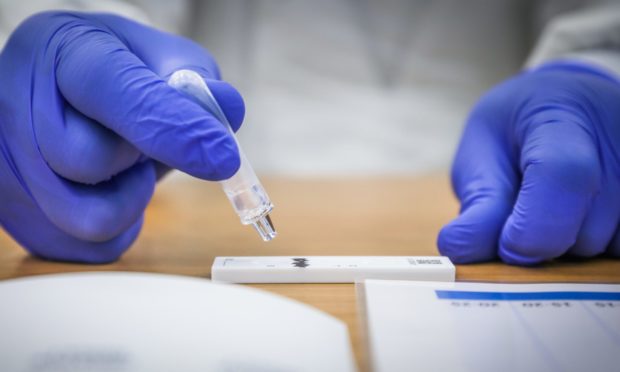One of the biggest dangers posed by Covid is the risk that even those without symptoms can infect others – with sometimes deadly consequences.
Now, in a bid to further clamp down on the spread of the virus, asymptomatic testing is to be rolled out at six north-east locations.
The trial has been organised to stem the spread of the virus in communities thought to be “vulnerable” to outbreaks.
The facilities are expected to be up and running by the middle of the month and offer results within around half an hour.
Health chiefs say community asymptomatic testing (Cat) will give people “peace of mind” by providing people with access to tests even when they are not showing any signs of coronavirus.
This could include those who have found it difficult to socially distance when visiting someone, or have been caring for someone vulnerable and want to ensure they have not contracted the virus.
And, if a person is found to have coronavirus without symptoms, it will allow them to begin self-isolating and limit the number of people they may otherwise pass it on to.
After collaborating with councils, NHS Grampian is working to establish sites in Peterhead, Old Aberdeen, Buckie, Lossiemouth, Forres and Elgin.
Each is expected to go live in the coming weeks.
A similar trial will also be taking place in Fife, with a view to expanding the scheme further if successful.
NHS Grampian’s public health director, Susan Webb, said: “About one-third of people who have Covid don’t experience any symptoms, so this is an important milestone in the expansion of Grampian’s testing programme – and one that may help us to contain and suppress the virus.
“Once the sites are operational we will be asking people to make use of them if they are concerned they may have been placed at increased risk in order to provide an additional method of detection.”
How do lateral flow tests work?
Lateral flow tests require a patient to have the inside of their mouth and nose swabbed, in line with the more common PCR test.
But while it requires laboratory machinery to achieve a result, lateral flow tests can be completed quickly on-site.
After mixing the swab with a buffer solution to break down the virus fragments, a drop of the liquid is placed on a specially-made device.
Inside there is a strip of material containing antibodies which combine with the swab sample and change colour if coronavirus is detected, using a method similar to that of a pregnancy test.
The test results generally show up within 10 to 30 minutes, allowing for many more people to be tested in a much reduced timeframe.
There is a drawback in that they are less sensitive than PCR tests and can sometimes result in a false positive.
But NHS Grampian says anyone who tests positive with a lateral flow device will have the result confirmed with a PCR test so they can self-isolate if required.
The health board has also advised that these tests only offer a “snapshot” in time and is urging people to continue following the relevant public health guidance.
Move will help ‘vulnerable’ communities
Aberdeenshire Council leader Andy Kille said: “We have seen great successes in recent months where communities have worked with us to get on top of localised outbreaks.
“But towns like Peterhead, and other settlements of that size, remain vulnerable to the spread of Covid, so we are mobilising teams to support this programme.
“Testing people with no symptoms could provide an insight into the spread of the virus and put resilient communities like Peterhead at the heart of the fight back against the virus.”

